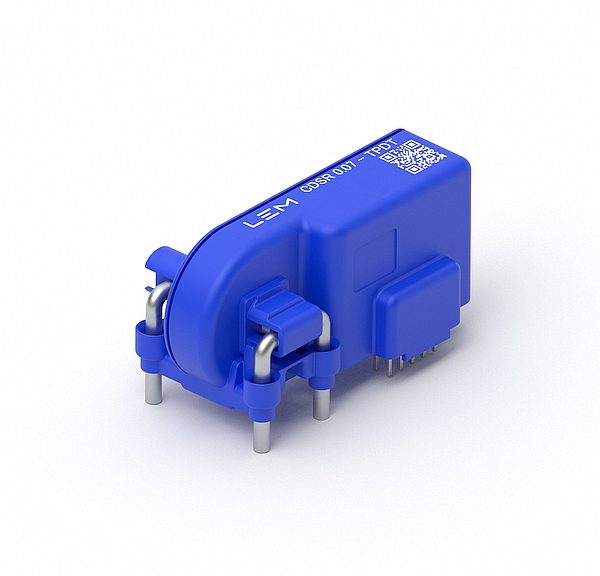- Lem completes its range of leakage current sensors with the CDSR model, which is available with three types of output (fault/trip, digital on SPI bus and analog output).
- This leakage current sensor is compatible with private charging stations and electric vehicle charging cables.
The latest addition to Lem’s CDSR family is based on Fluxgate technology. It is a type B residual current sensor. It aims to reduce electromagnetic interference, facilitate preventive maintenance and improve the reliability of AC chargers for electric cars.
Available in single-phase or three-phase versions and conforming to international overcurrent standards (IEC 62752/62955/UL 2231), it is suitable for charging stations from 3.3 to 22 kW.
Electric vehicles using a high-voltage battery are energy sources, which must be monitored to avoid electric shocks to users, or damage to the protective devices of the home’s electrical panel.
To comply with current standards, a measurement solution is needed that can distinguish between AC and DC leakage currents. According to Lem, leakage currents of the order of 5 mA, i.e. 10,000 times less than the current flowing in the conductor, need to be measured. The Fluxgate technology of Lem’s CDSR family achieves this objective thanks to its integrated primary conductors.
The compact, vertical shape of the CDSR sensor makes it possible to integrate the leakage current detection function and the routing of power tracks on electronic boards. The sensor also features a self-test function that can be activated and parameterized as required.
With the CDSR sensor family, manufacturers and users of AC charging stations and charging cables can, according to Lem, reduce the electromagnetic interference that can affect nearby electronic equipment, improving the charger’s overall electromagnetic compatibility.
The CDSR current sensor can also be a valuable aid to preventive maintenance, flagging up potential problems before they become serious, thus reducing repair costs in the long term. In fact, it enables minor leaks to be detected at the very first signs of deviation from normal behavior.






